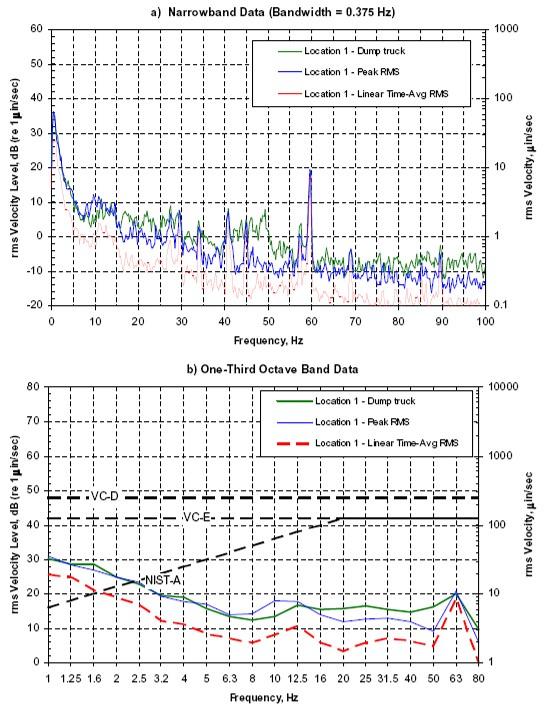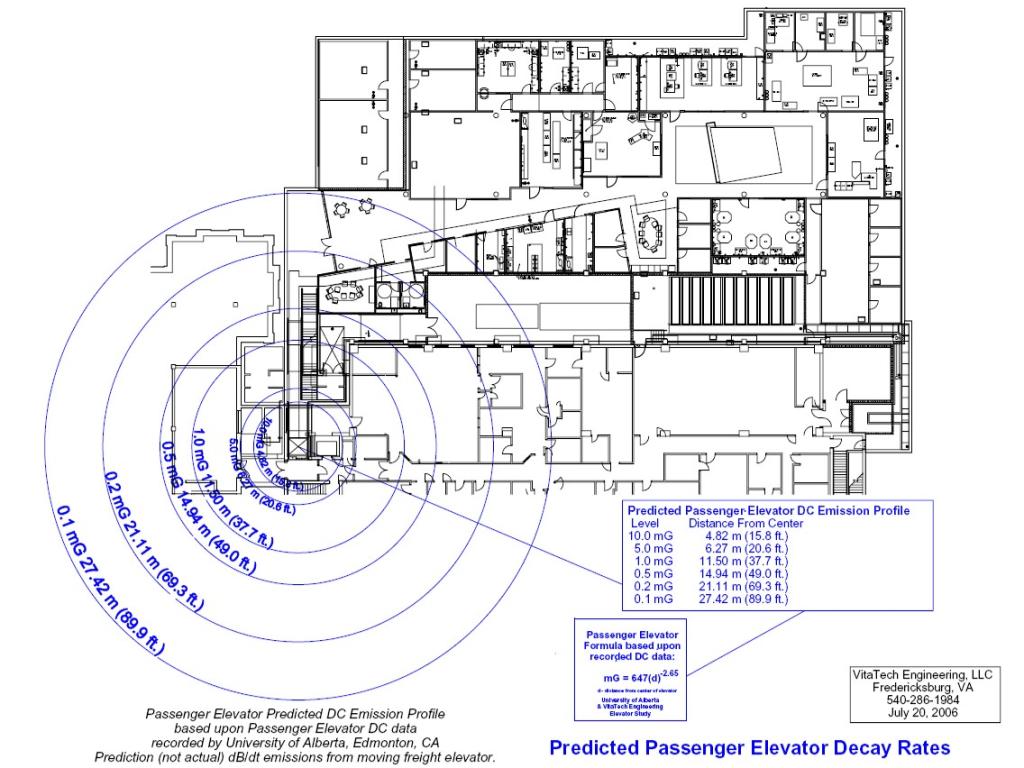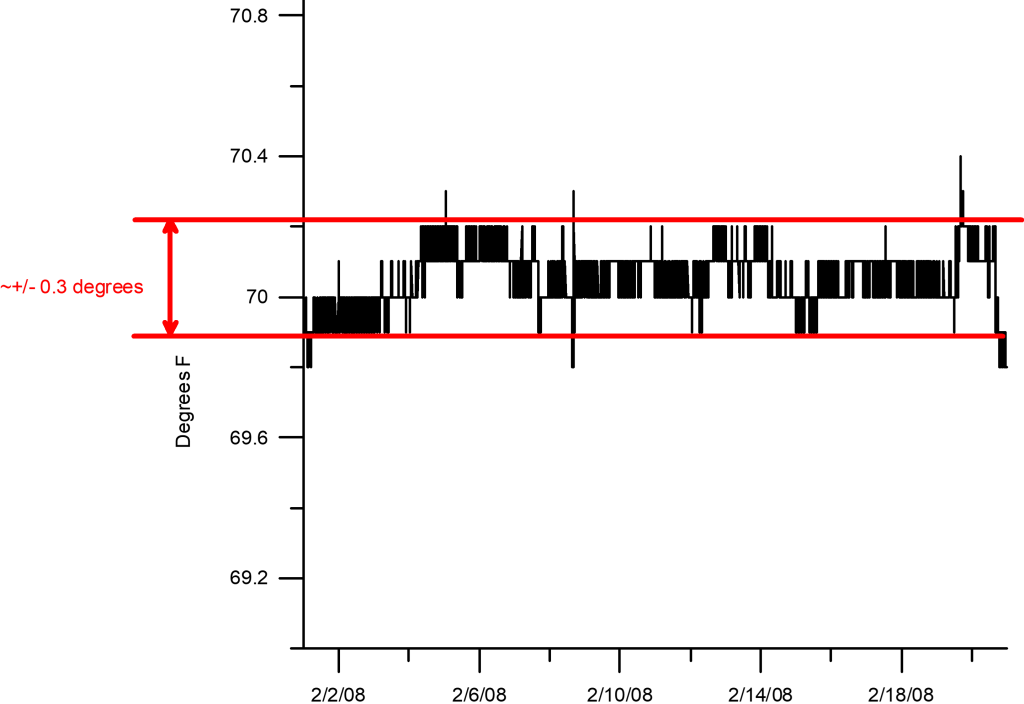Technical and Environmental Performance
Vibration Control
The foundation of our laboratory is poured directly on Eugene Formation bedrock, which exhibits an unusually high damping coefficient, resulting in a vibration level that exceeds the NIST-A criteria requirement for nanotechnology by a factor of two to four (depending on the frequency). Large cross-section, round ducting and low-flow diffusers also reduce HVAC vibrations.


EMI Shielding
Extensive shielding for electromagnetic interference (EMI), including all steel conduit, additional power panel shielding, no overhead electrical power, low-noise earth grounding rods, and isolated and insulated rebar in foundation to avoid ground loops.


Temperature Control
Precise temperature control throughout the analytical facilities is better than +/- 0.5 degrees F (better than 0.2% in the TEM lab). This provides ultra-stable instrument performance to attain ultimate spatial resolution and minimal instrument drift for high accuracy quantitative measurements.



Dust Management
Dust control measures include gradient air pressure room differentials (clean to less clean), HEPA filtration, and sticky mats.
Floor Plan
Our 40,000-square-foot facility comprises more than a dozen laboratories for characterization and fabrication instrumentation. Additional spaces are available for lease to industrial partners.
Image
